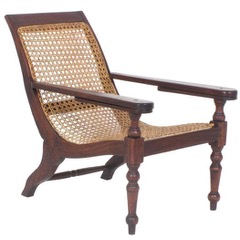“CHAIR EXTRAORDINAIRE” – by Des Kelly
Nearly every good home in Ceylon had one. This chair did take a fairly large part of the normal verandah’s (or front porches) of the usually medium sized homes that were common over there, but of course, there were “Wallowvas”
(spelt as pronounced) & Mansions of the rich & famous that could easily accommodate two, or even three of them.
Thank you, Charley Schokman for reminding us about these “Hansi-Putuwas”. True to your name, you give us all a shock sometimes, bringing up these wonderful memories.
The “post” is welcome, well-written, and serves it’s purpose, and the picture of the chair looks pretty good, as well.
Tell me if I’m wrong, but I think that the premiere furniture makers of bygone Ceylon, Don Carolis & Sons made that one. That said, let’s leave it there, & bring you the story of
“The Chair-Extraordinaire.

Desmond Kelly.
(Editor-in-Chief) e’Lanka.
PLANTER’S CHAIR – UNIQUE DESIGN

The Hansi Putuwa is known as plantation or planters’ chairs, they became popular during the British era, when they were used in airy upcountry gardens and verandas by the Portuguese. Like all good designs, form and function work together, its perfectly in total harmony.
The low reclining chair has a back and seat caned in one continuous section. The cane work allows the air to flow freely through resulting in a cooling effect – essential for life in the hot and steamy tropical weather. Each arm is composed of a flat plank with a rounded end, joined with a flat headed dowel or sometimes an ornamental brass pin, to a nearly identical plank that rotates out, from below into a footrest, forming a platform to rest one’s legs upon.
These flat arms along with the sloping back are the distinguishing features of the planter’s chair.
Initially planter’s chairs were used exclusively by the male dominated environments of the plantations and camps. But by the late nineteenth century they became firmly established as a prerequisite of every British colonial household principally for use on the veranda. Today it is a classic – the epitome of stylish colonial design. Perfect for those who are seeking the elegant colonial interior look.







